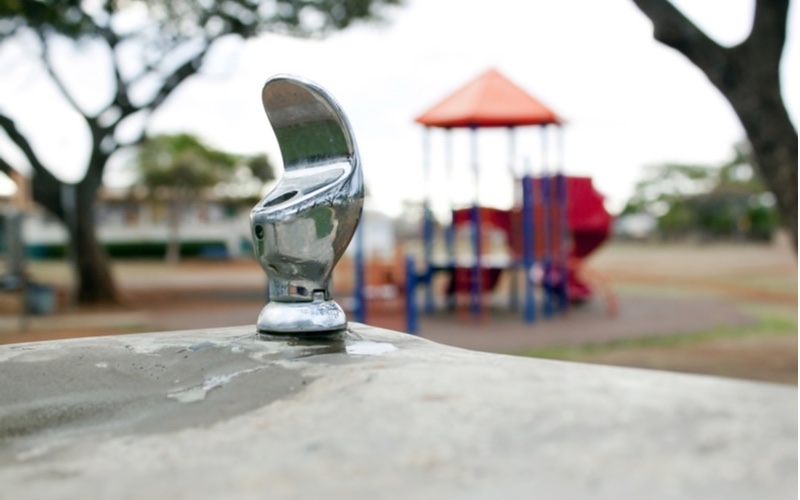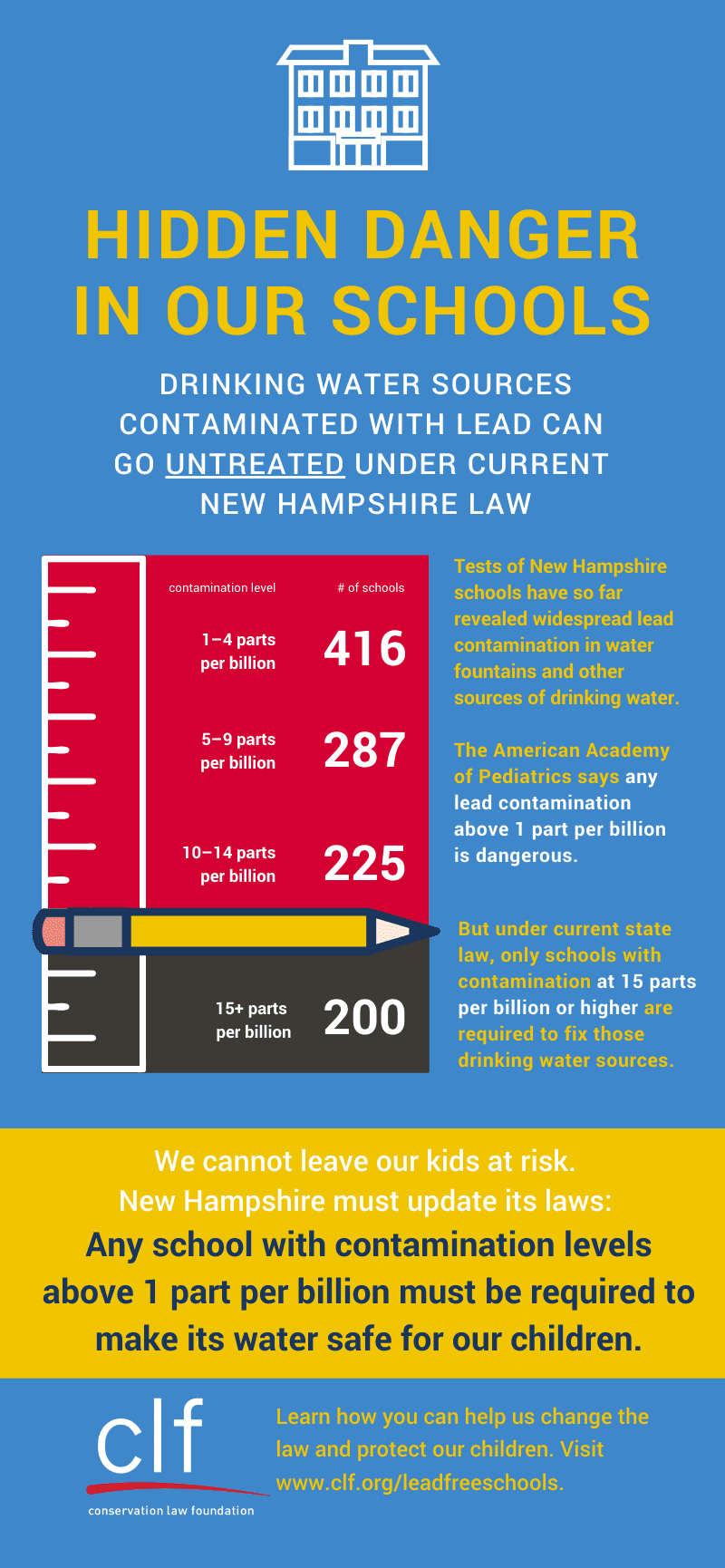
Our schools and childcare centers can be hidden sources of lead, putting our kids at risk of poisoning. Photo: the808 via Shutterstock
It’s a troubling reality that in many schools and childcare facilities – places where we send our kids to learn and be safe – our children can be exposed to lead in their drinking water. And it’s especially troubling that in New Hampshire, like most states, we don’t have health-based standards to protect our kids from that harmful lead exposure. This legislative session, we’ll be working to correct that problem.
NH’s Requirements for Schools and Childcare Centers
As a result of recent improvements in New Hampshire’s lead laws, all schools and licensed childcare centers must periodically test for the presence of lead in water available for consumption. If that testing finds lead at a level that exceeds the federal government’s standard, the school or childcare facility must take remedial action to eliminate the danger.
The new law is a positive development – it’s generating much-needed data about lead in drinking water where are kids learn and play. But it’s flawed in one crucial respect: it’s tied to the federal government’s standard, which, incredibly, is not a health-based standard. Rather, the federal government’s standard for lead – 15 parts per billion – is part of the Environmental Protection Agency’s so-called Lead and Copper Rule, which regulates how our public water systems are maintained as opposed to what is safe, at the tap, for human consumption.
What’s Needed: A Health-Based Standard that Protects Kids from Lead
According to the American Academy of Pediatrics, schools should take remedial action when lead is found at a level greater than 1 part per billion. Given the health dangers associated with lead poisoning, especially for our youngest children, this recommendation should come as no surprise.
Because New Hampshire’s current law requires remedial action only if lead is detected above the federal limit – a limit fifteen times higher than the American Academy of Pediatrics’ recommendation – our children remain at risk. A change is needed, and that’s why in the upcoming legislative session, we and other stakeholders will be working to establish a health-based standard of 1 part per billion to truly protect our kids. This will ensure that any time a water fountain or other source of drinking water exceeds that lower level, remedial action is taken immediately.
The Threat of Lead in Drinking Water is Real
New Hampshire’s recent requirements that schools and childcare centers test their water for lead has generated substantial data – and the data show that contaminated drinking water is a real and urgent problem.
Testing completed just last year found that 416 of the state’s 639 schools have at least one test result with a lead level greater than the American Academy of Pediatrics’ 1 part per billion standard and less than 5 parts per billion. Nearly 300 schools have at least one sample between 5 and 10 parts per billion, and 200 found levels exceeding 15 parts per billion (the federal government’s non-health based standard).
Although the New Hampshire Department of Environmental Services has received less data from childcare centers, what they have received indicates that lead in drinking water can be a problem there as well. Recent testing revealed 144 facilities with lead at levels between 1 and 5 parts per billion, 57 facilities with levels between 5 and 10 parts per billion, and 34 facilities with lead at 15 parts per billion or higher.
Help by Lending Your Voice
Stay tuned for ways you can help, as we’ll be keeping folks apprised of our effort to strengthen our lead laws as the legislative process unfolds. We hope you’ll let your legislators know that adopting a health-based standard for lead in water is essential to ensuring our schools and childcare centers are healthy, safe places for our kids to learn.




